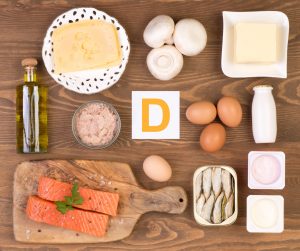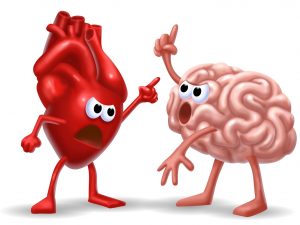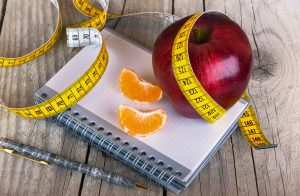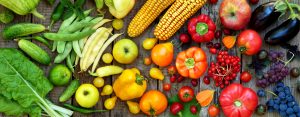 Heart disease is the number one cause of death for both mean and women in the United States. Therefore, it is no surprise that researchers are looking endlessly for ways to reduce risk of this condition. A recent study has found that for those with diabetes, the earlier diagnosis, the lower the heart disease risk later on in life.
Heart disease is the number one cause of death for both mean and women in the United States. Therefore, it is no surprise that researchers are looking endlessly for ways to reduce risk of this condition. A recent study has found that for those with diabetes, the earlier diagnosis, the lower the heart disease risk later on in life.
Heart disease risk factors
Heart disease involves conditions such as coronary heart disease (CHD), which can lead to a heart attack or stroke. Those with the following risk factors have a higher chance of developing heart disease:
- high blood pressure
- high cholesterol
- smoking
- overweight and obesity
- being inactive
- excessive alcohol intake
- diabetes
Diabetes and heart disease risk
A 2017 report from the New England Journal of Medicine states that around 208,000 people under the age of 20 years old has a diabetes diagnosis. Furthermore, a recent study in Diabetologia looked at the age of diabetes diagnosis and risk of chronic disease conditions such as heart disease, stroke, and cancer.
The study looked at data on over 700,000 people from Australia with a diabetes diagnosis between 1997 and 2011. The average age of diagnosis was 59 years old. However, researchers state that the earlier the diagnosis, the higher the risk of all-cause mortality. In particular, being a diagnosis 10 years earlier tha average showed a 20-30 percent increase in all-cause mortality, with a 60-percent higher risk of developing heart disease.
Researchers suggest living with the disease longer increases complication risk. In turn, people with diabetes have a greater chance of diabetes-related health issues. Therefore, it is important to educate those with diabetes on healthy lifestyle practices. Teaching those with diabetes how to control their condition will help lower risk of complications. In addition, it is important to help prevent new cases of diabetes in younger adults.
How to reduce your risk of heart disease
From this study it is clear that the following steps should be followed to reduce your risk of developing not just heart disease, but diabetes as well.
- Eat a heart healthy diet full of fiber-rich fruits and vegetables, legumes, and whole grains. Also, be sure to limit your intake of fatty meats and stick to lean proteins. Examples of lean proteins include skinless chicken and turkey, lean beef, fish and other seafood, eggs, and low-fat dairy products. If you are vegetarian, some heart healthy plant-based proteins include nuts, nut butters, seeds, legumes, and soy-based products.
- Quit smoking or don’t start since smoking constricts blood vessels and increases risk of high blood pressure.
- Stay active at least 30 minutes a day most days of the week. No boot camp exercise is required. However, just be sure to engage in moderate exercise such as walking, swimming, light aerobics, gardening, dancing, or biking.
- Manage your weight by engaging in healthy eating and exercising as well as getting plenty of sleep and staying hydrated with at least half of your body weight in ounces of water or unsweetened beverages each day.
- Visit your doctor and track your numbers on a regular basis. See your doctor at least once a year if you have no heart disease or diabetes diagnosis. However, if you have a family history of either condition or have a diagnosis of diabetes or heart disease, then you should visit more often. It is important to know your numbers such as blood pressure, cholesterol levels, and blood glucose levels. If you have diabetes or are at risk, then you will want to keep track of your A1C, which is a number that tells the 3-month average of your blood glucose level health. An A1C of less than 7-percent is healthy for those with diabetes, while an A1C between 5.7 and 6.4 indicates prediabetes, and an A1C below 5.7% is healthy.
- Take a heart healthy supplement such as Alestra by Vita Sciences. Alestra contains niacin and plant sterols which provide advanced cholesterol support. Please contact your healthcare provider before starting any new supplement and do not use this supplement as a replacement to your prescribed medications.
–written by Staci Gulbin, MS, MEd, RD, LDN
Sources:
Centers for Disease Control and Prevention (November 28, 2017) “Heart Disease Facts.”
National Institute of Diabetes and Digestive and Kidney Diseases (February 2017) “Diabetes, Heart Disease, and Stroke.”
Sandoiu, A. (February 26, 2018) “Earlier diabetes diagnosis linked to heart disease, stroke.”
 Vitamin D, known as the sunshine vitamin, is a very important nutrient for overall health. Best known for its work in helping strengthen bones and teeth, vitamin D is starting to get more attention for other benefits it could provide. A recent study reports that cells damaged by heart attack or stroke may be repaired by vitamin D3.
Vitamin D, known as the sunshine vitamin, is a very important nutrient for overall health. Best known for its work in helping strengthen bones and teeth, vitamin D is starting to get more attention for other benefits it could provide. A recent study reports that cells damaged by heart attack or stroke may be repaired by vitamin D3. Do you get stabbing abdominal cramps after eating a fatty meal? Does dairy or gluten cause uncomfortable gas and bloating? Are doctors unsure of the origin of your chronic constipation or diarrhea? If you answered yes to any of these questions, then you may have what is called Irritable Bowel Syndrome (IBS). Although changes in the diet may be helpful in many cases of IBS, research shows that vitamin D may also help those with this condition.
Do you get stabbing abdominal cramps after eating a fatty meal? Does dairy or gluten cause uncomfortable gas and bloating? Are doctors unsure of the origin of your chronic constipation or diarrhea? If you answered yes to any of these questions, then you may have what is called Irritable Bowel Syndrome (IBS). Although changes in the diet may be helpful in many cases of IBS, research shows that vitamin D may also help those with this condition. Sleep is a precious commodity in your busy life. Between work, taking care of loved ones, and running errands, it is a wonder you find time to sleep at all. However, it is important to make time for sleep because of all of the health benefits adequate sleep can provide. A recent study suggests that making a to-do list may help ease your mind so you can capture more sleep.
Sleep is a precious commodity in your busy life. Between work, taking care of loved ones, and running errands, it is a wonder you find time to sleep at all. However, it is important to make time for sleep because of all of the health benefits adequate sleep can provide. A recent study suggests that making a to-do list may help ease your mind so you can capture more sleep. Like millions of other people, you may be hoping to lose some weight in this new year. However, the confusing part may be what eating plan, or shall I say “diet,” should you choose to follow? There is so much information in the media today making all sorts of weight loss claims. They may all seem promising, but not all may provide you the nutrients you need to succeed long-term. However, a recent report found that the DASH diet may be the answer to get you to your weight loss goal.
Like millions of other people, you may be hoping to lose some weight in this new year. However, the confusing part may be what eating plan, or shall I say “diet,” should you choose to follow? There is so much information in the media today making all sorts of weight loss claims. They may all seem promising, but not all may provide you the nutrients you need to succeed long-term. However, a recent report found that the DASH diet may be the answer to get you to your weight loss goal. Every new year, many of us make resolutions to be healthier. Whether it be weight loss, exercising more, eating healthier, or managing stress better, such resolutions usually start off strong. However, by early spring, such goals usually lose steam and get pushed off until the next new year. That is why it is important to plan ahead before making any goals so you can make sure they are realistic and backed up with a lasting motivating factor. With such planning, you can make your new year’s goals come true this year and maintain such healthy habits for the long-term.
Every new year, many of us make resolutions to be healthier. Whether it be weight loss, exercising more, eating healthier, or managing stress better, such resolutions usually start off strong. However, by early spring, such goals usually lose steam and get pushed off until the next new year. That is why it is important to plan ahead before making any goals so you can make sure they are realistic and backed up with a lasting motivating factor. With such planning, you can make your new year’s goals come true this year and maintain such healthy habits for the long-term.

 If you have ever tried to lose weight, then you probably have been told to track your calories. Most calorie trackers focus on keeping track of the calories you consume through food. On the other hand, fitness trackers or workout machines may track how many calories you burn during the day. However, is there more to the story of weight loss, or is calories in and calories out the only key to success? A recent report by health experts reveal that there may be more than simple math in the weight loss equation.
If you have ever tried to lose weight, then you probably have been told to track your calories. Most calorie trackers focus on keeping track of the calories you consume through food. On the other hand, fitness trackers or workout machines may track how many calories you burn during the day. However, is there more to the story of weight loss, or is calories in and calories out the only key to success? A recent report by health experts reveal that there may be more than simple math in the weight loss equation. Do you think you eat enough fruits and vegetables every day? You may track your macronutrients, have an apple a day, and be free of digestive concerns but still be missing the mark. A recent report by the Centers for Disease Control (CDC) has found that most adults in the United States could stand to eat a lot more fruits and vegetables each day.
Do you think you eat enough fruits and vegetables every day? You may track your macronutrients, have an apple a day, and be free of digestive concerns but still be missing the mark. A recent report by the Centers for Disease Control (CDC) has found that most adults in the United States could stand to eat a lot more fruits and vegetables each day.